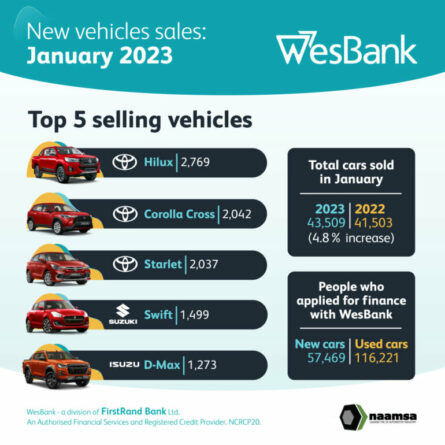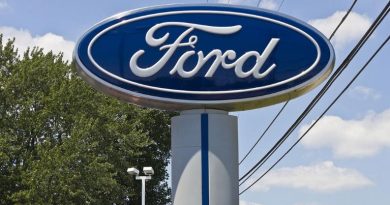Positive outlook for new vehicle sales
The new year kicked off with the eighth consecutive interest rate hike and yet another climb in fuel prices, let alone the seemingly worsening state of load-shedding.
“All these factors continue to place pressure, not only on the economy as a whole, but very practically on the households and livelihoods of consumers,” says Lebogang Gaoaketse, Head of Marketing and Communications at WesBank. “Yet, although interest rates are now above pre-pandemic levels and inflation remains high, the new vehicle market continues to recover.”
WesBank says the pent-up demand of the new vehicle market during the majority of last year will help sales to continue growing during 2023. “The market has been stifled by low supply due to various logistical and manufacturing constraints across the globe,” says Gaoaketse. “Despite this, 2022 sales still grew 13.9% year-on-year to levels experienced before the pandemic, albeit that those were already under economic pressure.”
The bank expects supply to improve substantially during 2023, allowing the market continued growth as more deals become possible. “The levels of demand as measured by WesBank’s rate of applications has continued to show high levels of growth,” says Gaoaketse. “With supply to meet this demand, we can naturally expect sales to increase.”
Another contributing factor to new vehicle sales growth will be the shift back to new vehicles from the pre-owned market that has experienced softening price inflation and a lack of good quality stock. “Exciting new vehicle line-ups and a closing gap in value proposition between new and used will assist the new vehicle market that also offers cost-of-ownership benefits in the form of warranties and service plans.”

However, that doesn’t mean the market will simply flourish. “Volatility in so many socio-economic spheres pose an ever-present possibility of disruption to the market, both globally and domestically,” says Gaoaketse. “Exchange rates affect pricing, fuel prices impact mobility budgets, supply could change, and constant economic pressures will continue to influence household budgets and business confidence. Affordability will continue to be a driving factor in the South African new vehicle landscape.”
WesBank’s positive outlook for market growth this year was borne out by January sales. According to figures released by naamsa | the Automotive Business Council, 2023 sales recorded 43,509 units, up 4.8% year-on-year.
“Year-on-year comparisons are now relatively more sensible and realistic given the recovery of the market last year to relatively normal terms,” said Gaoaketse.
Passenger car sales increased 2.9% to 31,072 compared to January last year. The dealer performance in the sector was softer, increasing 1.6% to 24,918 sales given the strong performance of the rental market, with 5,041 sales during the month.
There weren’t significant volumes of Light Commercial Vehicle sales to the rental market, but that didn’t deter the segment performing well, up 10.4% to 10,622 units. The dealer performance in the segment was subsequently stronger, increasing 12.3%, recording 9,694 sales off showroom floors.
“While 2023 should experience continued growth for the South African motor industry, it will continue to provide ongoing challenges for industry and consumers to overcome,” concluded Gaoaketse.
South Africa’s new vehicle sales start on a positive note in 2023 https://t.co/2iTSTP5qvr#ArriveAlive #NewVehicleSales @NADAUpdate pic.twitter.com/QahEJ58myj
— Arrive Alive (@_ArriveAlive) February 2, 2023




